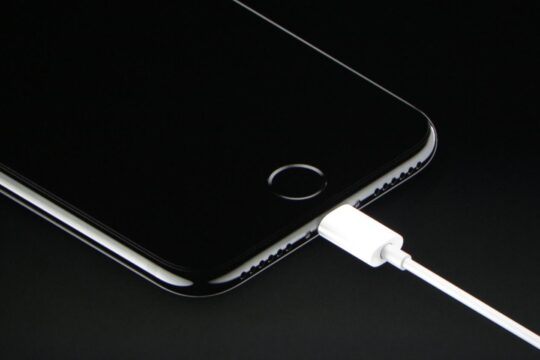
Welcome, digital enthusiasts! In this age of unprecedented technological advancements, it is no secret that user experience (UX) is the key to success for any app. From smooth navigation to intuitive design, creating a seamless and satisfying user journey should be at the forefront of every developer’s mind. However, achieving this can prove challenging as we grapple with an ever-changing tech landscape. Fear not! In this post, we will explore some key considerations when developing your app so that you can maximize UX and keep users coming back for more. So grab a notebook and let’s get started!
What Is User Experience?
User experience (UX) is critical to the success of any application. While developing your app, there are a number of key considerations that can help maximize the UX.
- The first and foremost consideration is to understand your users and their needs. What are they trying to accomplish? What are their pain points? How can your app help them achieve their goals? Answering these questions will give you a strong foundation for designing an effective UX.
- Another important consideration is usability. How easy is it for users to accomplish their goals with your app? Are the controls intuitive and self-explanatory? If not, consider simplifying or redesigning them.
- Another key element of UX is aesthetic appeal. First impressions matter, so make sure your app has a polished look that attracts users and makes them want to come back for more.
- Don’t forget about performance. Your app needs to be responsive and fast, especially if it’s handling sensitive data or complex tasks. If users have to wait too long for things to load or process, they’re likely to get frustrated and give up on your app altogether.
By keeping these key considerations in mind throughout the development process, you can ensure that your app provides an optimal UX for your users.
Defining Your Audience
Defining your audience is crucial when developing an app, as it allows you to tailor the user experience to meet their specific needs and preferences. By identifying your target demographic, such as age range, interests, and technology use habits, you can create a more intuitive app that speaks directly to their interests.
Consider conducting market research or surveys to gather insights into what your target audience wants in an app. This data can help guide decisions about design elements and functionality that will resonate with users.
It’s also important to consider the various settings in which your app may be used and adapt accordingly. For example, if your target audience primarily uses the app while on-the-go or during brief periods of downtime throughout the day, the design should prioritize speed and efficiency over complex features that require sustained attention. Or, if you are going to be building something designed for a remote workforce, you might want to look to Graphon to deliver Windows Applications publishing with the cloud in mind.
Understanding who will be using your app not only improves its usability but can also lead to increased engagement levels and better retention rates. Taking time upfront to define your audience pays off in creating a successful product down the road.
Designing For A Mobile Environment
With the majority of internet usage now coming from mobile devices, it’s essential to consider how your app will appear and function on smaller screens.
When designing for a mobile environment, simplicity is key. Too many bells and whistles can distract from the main purpose of the app and make it difficult for users to navigate. Designers must prioritize which features are most important and ensure they are easily accessible on a small screen.
Additionally, responsive design should be implemented to allow the app to adapt to different screen sizes seamlessly. This ensures that users don’t have difficulty viewing or interacting with components such as buttons or text.
Finally, designers must take into account touch-based navigation instead of relying on traditional click-based interactions used in web environments. The size and spacing of interactive elements like buttons must be optimized for fingers rather than cursors.
Testing For Quality Assurance & Usability
As your app development progresses, it’s important to implement quality assurance and usability testing measures to ensure that your app meets the needs of your users. There are a number of ways to test for quality assurance and usability, including:
– Functional testing: This type of testing verifies that your app functions as intended and meets all functional requirements.
– Usability testing: This type of testing evaluates how easy it is for users to use your app and identify any areas where improvements can be made.
– Performance testing: This type of testing assesses how well your app performs in terms of speed, stability, and scalability.
– Security testing: This type of testing ensures that your app is secure and protected against potential threats.
Testing for quality assurance and usability is essential to the success of your app development project. By taking the time to test early and often, you can identify problems early on and make necessary changes to improve the user experience.
Making Use Of Existing Toolkits & Resources
When developing an app, maximizing user experience is one of the most important considerations. Streamlining the development process can be achieved by utilizing existing toolkits and resources. There are a wealth of resources available to developers from code libraries and pre-built UI components to design templates and development frameworks.
By making use of these existing toolkits, developers can save time and ensure that their apps deliver a great user experience without having to reinvent the wheel. This means less time spent on basic coding tasks like building layout grids or creating custom animations, allowing more time for fine-tuning features or integrating custom functionality.
Another advantage is that by tapping into existing tools and resources, developers can also benefit from ongoing support from the wider development community. Whether it’s through online forums or developer communities dedicated to specific technologies or platforms, there are always opportunities for learning new skills or getting input on tricky coding challenges.
Conclusion
Developing an app is no small task, but with thoughtful consideration of user experience design principles and best practices in app development, you can ensure a successful release and positive reaction from your users. Following the key considerations discussed above when developing your app will help maximize your user’s satisfaction, taking into account their needs today as well as in the future. With this approach to developing an impactful mobile application, you are sure to create a high-quality product that people love to use!



